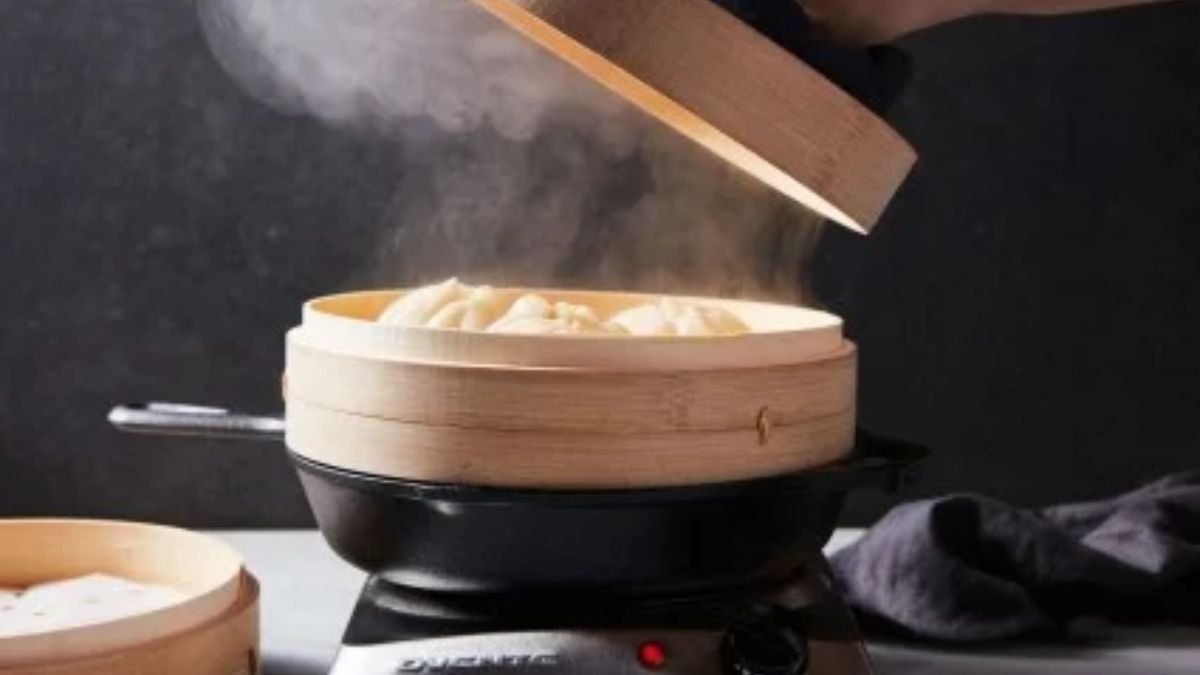The Complete Guide to Making Perfect Steamed Buns at Home. Steaming is a cooking method often overlooked in the culinary world, but it truly is the key to not only healthy but also incredibly flavorful and tender food. Looking at Asian cuisine, we see that steaming isn’t just a technique; it’s a way of life.
For many of us, steaming evokes cherished memories and traditions. For example, in Taiwanese homes, pork belly slowly steaming in a bamboo steamer, grandmother’s steamed fish with ginger and scallions, and mother’s fluffy steamed buns—these aren’t just food; they represent the warmth of family.
Even in today’s world of modern kitchen gadgets and ovens, steaming remains a simple and comforting experience.
Steamers: Why are they so special?
Steamers often don’t get the credit they deserve in Western kitchens. But the truth is, they are incredibly versatile—from steaming vegetables to reheating leftovers. It’s the secret to those light and fluffy steamed buns.
- Healthy cooking – Steaming requires very little oil.
- Preserves flavor – Vegetables and meats retain their natural flavor and color.
- Soft texture – The hallmark of steamed buns, dumplings, or dim sum is their soft, fluffy texture, which only steaming can achieve.
Bamboo vs. Metal Steamers
Bamboo Steamer
- This is the classic and economical choice.
- The bamboo frame absorbs condensation, preventing water droplets from dripping onto the food.
- Ideal for steamed buns and dumplings.
- A 10-inch steamer is usually sufficient for home use.
Metal Steamer
- Stainless steel is durable and easy to clean.
- But it has one drawback—the moisture can drip from the lid onto the food.
- Solution: Wrap the lid tightly with a dry cloth or cheesecloth. This will absorb the moisture and keep the food from getting soggy.
How to Prepare the Steamer
Place the bamboo steamer on top of a wok/large pot.
- Pour about 1–1.5 inches of water into the pot.
- Place the steamer when the water starts to boil.
- Make sure the bottom of the steamer does not touch the water.
Use a metal steamer.
- Tie a dry cloth over the lid.
- Ensure that steam circulates evenly inside.
Why is lining the steamer necessary?
If you place the buns directly in the steamer, they might stick. That’s why lining the steamer is essential.
- Perforated parchment paper – the easiest and most popular method.
- Parchment squares – place a separate piece under each bun.
- Lettuce leaves – a natural and traditional option.
- DIY paper – cut a large piece of parchment paper at home and punch holes in it.
Tips for Steaming Buns and Dumplings
- Bring the water to a full boil first.
- Space the buns evenly.
- Keep at least 1 inch of space between them.
- They will expand while steaming.
- Take advantage of the layered design of the bamboo steamer.
- You can steam multiple layers of buns at once.
- Don’t open the lid while steaming.
- The buns may deflate if exposed to cold air.
- Keep covered for 5 minutes after steaming.
- This will maintain the shape and softness of the buns.
How to Care for the Steamer?
Bamboo Steamer
- Soak the new steamer in warm water for 5 minutes before first use.
- Wash with mild soap and warm water after each use.
- Air dry thoroughly. Never put it in the dishwasher.
- Apply a light coat of vegetable oil occasionally to prevent cracking.
Metal Steamer
- Can be cleaned like any other cookware.
- Remember to change the cloth cover after each use and wash and dry it thoroughly.
Personal Experience and Cultural Connection
Steaming food is not just a cooking technique; it’s a part of our culture. In India, too, we see the magic of steaming in dishes like Dhokla, Idli, or Momos. In China, Japan, Korea, and Taiwan, steaming is an everyday practice.
The aroma of steamed food always evokes memories of home. When steam rises from the steamer in the kitchen, enveloping the entire space in a gentle mist, it not only whets the appetite but also provides a unique sense of comfort.
Why Embrace Steaming?
- Healthy – Less oil, more nutrients.
- Simple and Affordable – Possible without expensive equipment.
- Versatile – Vegetables, meat, sweets, buns, dumplings – you can steam it all!
- Environmentally Friendly – Uses less energy and resources.
Conclusion
Even with our kitchens overflowing with modern gadgets, steaming connects us to tradition, flavor, and health. Whether it’s a bamboo steamer or a metal one – both remind us that simple techniques can make life better and more flavorful. If you haven’t used a steamer before, now is the perfect time to add one to your kitchen. Not only will your food taste better, but you’ll also experience the wonderful and comforting process of steaming, a tradition that has brought people together for generations.

